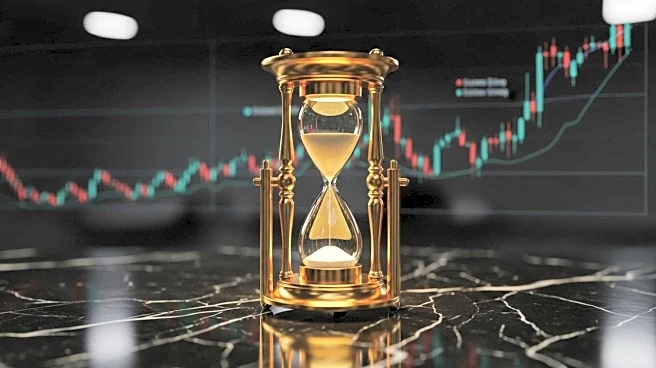What's Happening?
Gold prices have surged to a new all-time high of $3,922.70, driven by weak employment data and concerns over a potential government shutdown. The ADP employment report revealed a loss of 32,000 jobs in September, contrary to expectations of a 50,000 job gain. This marks the second consecutive month of job losses, the first such occurrence since 2020. The weak employment figures have reinforced expectations that the Federal Reserve will continue its accommodative monetary policy, supporting gold prices. Despite a modest gain of $5, or 0.13%, in Comex gold futures for December delivery, the intraday action was dramatic, with gold reaching its eighth record high since September.
Why It's Important?
The rise in gold prices underscores investor anxiety about economic fundamentals and political stability. As a safe-haven asset, gold's appeal increases during times of uncertainty, such as potential government shutdowns and weak employment data. The Federal Reserve's likely continuation of low interest rates further supports gold by reducing the opportunity cost of holding non-yielding assets. This situation highlights the delicate balance investors must maintain in interpreting macroeconomic signals amid persistent uncertainty.
What's Next?
The appearance of a shooting star pattern in gold's price action suggests a potential bearish reversal, though confirmation is needed. If a bearish candle forms in the next session, it could indicate a shift in market sentiment. Traders will closely monitor trading volume and price movements to assess whether the recent high marks an inflection point or a temporary pause in gold's rally.










